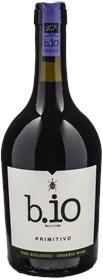In recent years, the growing attention towards sustainability has brought the environmental impact of wine under the spotlight. Like any other production sector, the wine industry is not exempt from resource consumption, emission of CO2, and waste generation.
However, some forward-thinking companies have conducted studies and implemented improvement solutions to reduce their environmental impact. One such example is Argiano, a historic Italian company renowned for its Montalcino wine production, acknowledged worldwide as a benchmark in Italian oenology. In 2021, Argiano decided to position itself as a pioneer in sustainability by commissioning and publishing a study to precisely calculate the carbon footprint and, consequently, the environmental impact of each phase of its product production (not only wine but also oil).
Given that knowledge is the basis for change, let’s try to understand how the wine industry in a country with a strong winemaking tradition like Italy can embark on the path of sustainability.
Contents:
- How much CO2 does a bottle of wine emit?
- Which point in the supply chain has the greatest environmental impact?
- How can a wine bottle be made more sustainable?
How much CO2 does a bottle of wine emit?
Various studies have been conducted in the past on the amount of CO2 equiemitted during the production of a single bottle of wine. The average value ranges from 0.9 to 1.9 kg of CO2 equivalent, but this is a value that doesn’t account for different types of wine, the type of energy source used, and many other possible variables.

Nevertheless, this indicative value can be useful when considering that, in the year the study was published, 11 million bottles of Brunello di Montalcino were sold, resulting in 11 thousand tons of CO2 equivalent. Continuing based on 2021 data, 627.5 million bottles of Prosecco equate to 627 thousand tons of CO2; 15 million bottles of Amarone produce 15 thousand tons of CO2 equivalent.
However, it’s essential to note that these figures are not excessive when compared to other industries. For instance, in 2021, Coca-Cola emitted 5.17 million tons of CO2 equivalent. While the comparison may be disproportionate, these figures help us rationalize the data.
Which point in the supply chain has the greatest environmental impact?
Argiano’s meticulous environmental impact assessment is applicable to all producers as it considers the entire wine production chain, essentially divided into three major sections:
- Upstream Phase
This section includes the environmental costs of viticulture and packaging. Here, the environmental impact involves water and soil consumption, the use of cultivation auxiliaries, and emissions from glass, plastic, and aluminum production.
- Central Phase
This involves the actual wine production, from grape processing and fermentation to aging and bottling.
- Downstream Phase
At the end of production comes distribution, with associated environmental costs of transportation.

The graph clearly shows that the upstream phase, involving cultivation and packaging production, has the most significant environmental impact in wine production. One activity stands out, emitting 23.8% of the carbon footprint of a single bottle of wine: the production of the bottle itself. Other relevant factors include fuel consumption by agricultural vehicles and electricity usage for all company processes from phase 1 to phase 3.
How can a wine bottle be made more sustainable?
To make wine production more efficient, the focus should be on solutions addressing critical points identified throughout the entire production chain. Many wineries and producers are at the forefront of this, using renewable sources for energy production, optimizing the company’s architecture with new architectural and technological interventions, engaging in reforestation, and reducing vineyard operations to minimize the use of agricultural machinery.
For complete sustainability, the journey is still long and could even involve bottle reuse.














